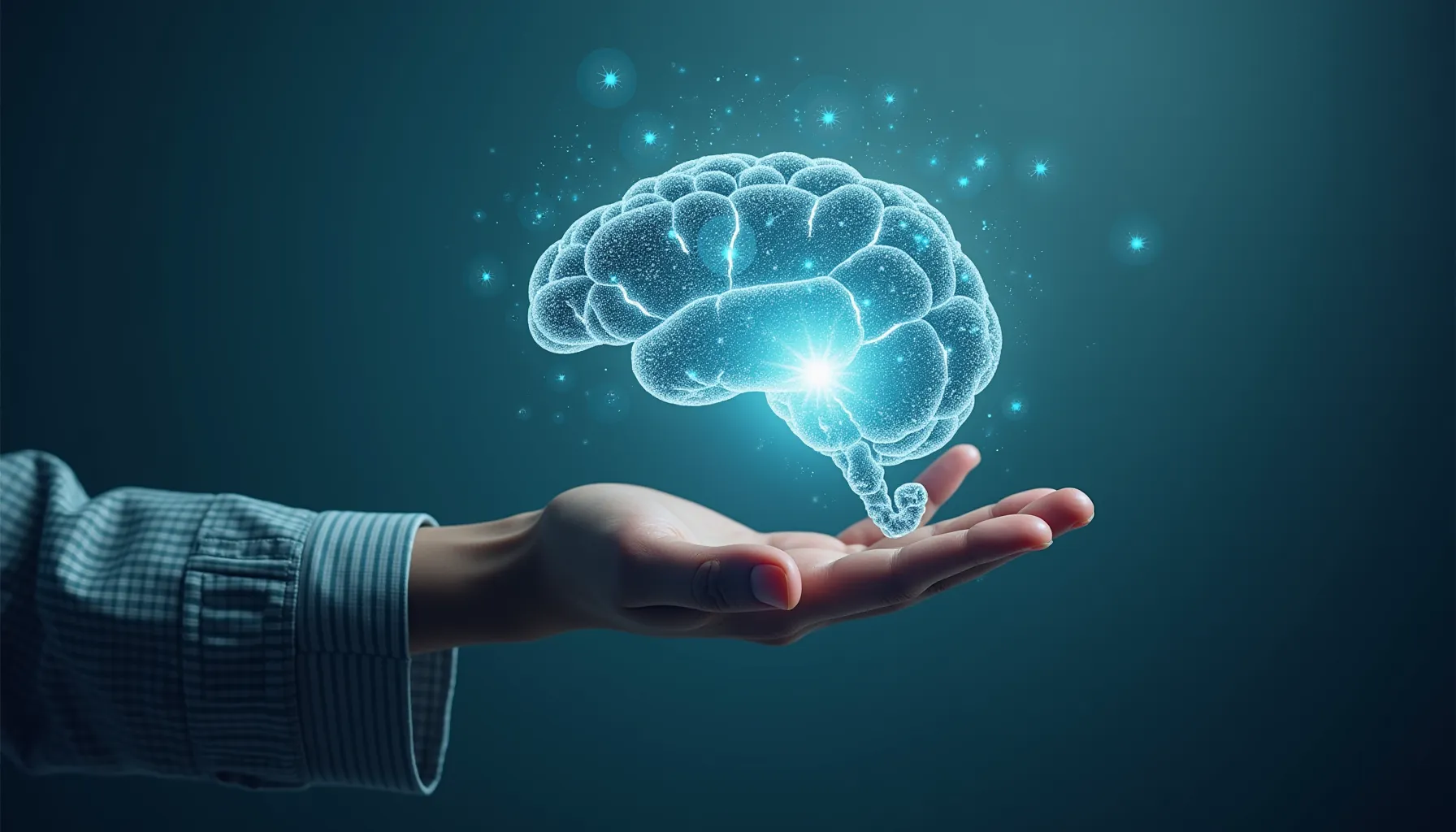Revolutionizing Creativity: The GPT New Image Model Explained
-
April 17, 2025
-
Rob Yum

The GPT new Image model marks a groundbreaking shift in how we create visuals, transforming the way artists, marketers, and innovators approach their craft. Imagine a world where you can generate breathtaking images from mere text prompts, overcoming creative blocks and enhancing your projects without the need for advanced design skills.
This capability not only empowers individuals but also democratizes creativity, allowing anyone to express their ideas visually with ease.
In this article, we will explore the evolving landscape of the GPT new image model, delving into its innovative features and multiple applications across various industries. You'll learn about its potential challenges and ethical considerations, as well as hear insights from users who have embraced this technology.
Lastly, we’ll gaze into the future of AI-generated visuals, helping you understand the implications for creativity and collaboration.
Key Takeaways
- A deep dive into the innovative capabilities of the GPT new Image model .
- Real-world applications across diverse industries, from marketing to creative arts.
- Challenges and limitations faced when utilizing the model.
- Ethical considerations and responsible use of AI in imagery.
- User experiences and feedback that shape ongoing developments.
- Future trends in AI and their potential impact on creative processes.

A New Era in Image Generation: What is the GPT New Image Model?
Understanding the Technology Behind the GPT New Image Model
The GPT new image model represents a remarkable advancement in how we generate visuals using artificial intelligence. Leveraging a blend of cutting-edge neural networks and deep learning, it enables users to translate textual descriptions into rich, detailed images. This multimodal capability allows for a seamless integration of text and visuals, effectively transforming mere words into breathtaking imagery.
Imagine giving the model a prompt like "a serene mountain landscape at sunrise," and just moments later, you’re greeted with an image that captures the scene perfectly. This intermingling of creativity and technology opens new doors for exploration and innovation, paving the way for diverse applications in art, marketing, and more.
Key Features That Set GPT's Image Generation Apart
One standout feature of the GPT new image model is its emphasis on photorealism. Unlike previous models, this iteration enhances the level of detail and texture in generated images, bringing them closer to reality. Users can rely on this model to produce visuals that look convincingly realistic, making it invaluable across various fields.
Another highlight is the interactive prompting functionality. This allows users to refine their input based on previous images generated, fostering a dynamic, iterative creative process. By tweaking prompts and experimenting with different descriptions, you can work collaboratively with the AI to achieve the visual results you desire.
Applications Across Industries: How the GPT New Image Model is Used
Marketing and Advertising Innovations
The marketing landscape is experiencing a renaissance thanks to the capabilities of the GPT new image model. Imagine a scenario where brands craft engaging campaigns without the extensive costs typically associated with hiring graphic designers. With this AI tool, marketers can generate stunning visuals tailored to various audiences swiftly.
For instance, a food brand might use the model to create mouth-watering images of its latest product for social media. By generating several options based on different themes, marketers can hone in on visuals that resonate best with their audiences. This efficiency not only boosts creativity but also enables brands to remain agile in their marketing strategies.
Creative Arts and Content Creation
Artists and content creators are harnessing the power of the GPT new image model to push their creative boundaries. Whether illustrating a blog post or conceptualizing artwork, the potential to generate high-quality visuals from simple textual descriptions is a game changer. Picture writing a fleeting thought about a character or scene, then watching it come to life in vivid detail.
This tool not only helps in overcoming creative blocks but also introduces new dimensions to storytelling. Authors can visualize settings and characters with ease, providing them a deeper connection to their own narratives. As the creative community increasingly adopts these technologies, it’s clear that AI-generated images will play a pivotal role in the future of content production.
Challenges & Limitations of the GPT New Image Model
Technical Limitations and Areas for Improvement
Despite its remarkable capabilities, the GPT new image model is not without its shortcomings. One notable challenge is the model’s occasional struggles with accuracy, particularly in generating complex scenes or very specific artistic styles. Users might find that a prompt for a specialized theme yields results that are somewhat generic or lacking in detail.
Additionally, as the model relies heavily on training data, it may not always reference niche or contemporary topics accurately. These limitations can present frustrating moments for users who depend on precise visuals. However, recognizing these challenges is the first step toward improvement and enhancement in future iterations.
Ethical Considerations and Responsible Use
With great power comes great responsibility, and the AI image generation landscape is no exception. One of the most pressing concerns is the potential misuse of generated images, such as the creation of misleading or harmful content. For example, deepfake technology can easily manipulate visuals, raising ethical questions surrounding authenticity and ownership.
OpenAI is mindful of these dangers and has implemented safety protocols to mitigate risks. Measures such as metadata tagging help maintain transparency surrounding the origin of AI-generated images, ensuring users are conscious of their source. As critical as innovation is, it is equally essential to address the ethical implications that come with it.
User Experience: What Are Users Saying?
Early Adopters and Feedback
The excitement around the GPT new image model is palpable among early adopters. Many users report enhanced creativity and satisfaction with the model's outputs. Imagine a graphic designer who, rather than spending hours on tedious tasks, can input a few phrases and receive dynamic images in moments.
This shift has significantly changed their workflow, allowing more time for refinement and ideation.
User testimonials frequently highlight the model's ability to generate images that resonate with their intent creatively. However, some users express frustration with the occasional inaccuracies in more complex requests. Despite these hiccups, overall satisfaction remains high, as the benefits often outweigh the limitations.
After all, who wouldn’t appreciate a tool that can turn abstract ideas into vivid visuals with just a few clicks?
Community Engagement and Collaborative Development
The development of the GPT new image model is not just a top-down endeavor; it thrives on community engagement. Users are actively participating in forums and feedback channels, sharing tips and tricks to enhance their experience. This collaborative spirit fosters an environment of innovation, with the community suggesting improvements and new features that can make the AI even more robust.
OpenAI encourages this interaction, which not only strengthens the model but also aligns future updates with user needs and expectations. A connected user base leads to richer insights, making the technology more accessible and effective for everyone.
As this creative collaboration grows, the GPT model is likely to mature in ways we can’t yet imagine, driven by the collective ingenuity of its users.
The Future of the GPT New Image Model: What Lies Ahead?
Emerging Trends in AI and Image Generation
Looking ahead, the future of the GPT new image model is bursting with potential. With advancements in AI technology, we can expect even greater accuracy and creativity in image generation. Imagine a scenario where the model continues to evolve, recognizing cultural nuances and preferences, leading to hyper-personalized imagery at lightning speed.
As the integration of AI in creative processes becomes more seamless, industries will likely see dramatic shifts. Features such as real-time collaboration could emerge, allowing multiple users to interact with the AI simultaneously, enhancing brainstorming sessions and creative projects. This adaptability will empower creators to push boundaries and explore innovative concepts that were previously out of reach.
Preparing for Changes in the Creative Landscape
With the introduction of AI-generated imagery, it’s crucial for content creators and businesses to adapt to a rapidly changing landscape. The GPT new image model is already setting trends that challenge traditional methods of visual creation. As these technologies further embed themselves into our workflows, the demand for skills in AI interaction will grow.
What does this mean for you? Opportunities abound for those willing to embrace these tools. Upgrading your skills to include using AI models could give you a distinct edge, whether you’re a freelancer, an entrepreneur, or part of a creative team. By recognizing the vast potential of the GPT new image model, you can be at the forefront of a new wave of creativity that leverages technology for extraordinary results.

Embracing the Future of Creativity
The GPT new image model is more than just an evolution in technology; it symbolizes a significant shift in how creativity intersects with artificial intelligence. Throughout this article, we have explored the innovative features that make this model stand out, from its photorealistic outputs to interactive prompting capabilities. These advancements not only empower marketers and creators but also foster new forms of artistic expression.
As we look towards the future, it’s vital to recognize the transformative potential of AI in our creative landscapes. Businesses and individuals alike must adapt and embrace these tools to stay ahead in a competitive environment. By understanding the challenges and ethical considerations, we can use this technology responsibly and meaningfully.
Now is the time to engage with the GPT new image model. Experiment with it in your next project, whether that’s for marketing, storytelling, or personal expression, and discover how AI can help bring your ideas to life. The future of creativity is not just about using technology; it’s about redefining the boundaries of what we can achieve together.
Frequently Asked Questions
- What is the GPT new image model? The GPT new image model is an advanced AI tool developed by OpenAI that enables users to generate high-quality images from text prompts, leveraging the latest in neural network technology for enhanced creativity.
- How can the GPT new image model be used in marketing? This tool allows marketers to create engaging visuals quickly and efficiently, tailored to campaigns by generating multiple image variations based on text descriptions, thus streamlining content creation.
- What are the main features of the GPT new image model? Key features include multimodal capabilities that integrate both text and images, a focus on photorealism, and an interactive prompting system that allows users to refine their requests based on previous outputs.
- What challenges should users be aware of when using the GPT new image model? Users may face technical limitations, such as occasional inaccuracies with complex prompts, and ethical concerns surrounding misuse, including the potential for generating misleading content.
- How is the future of the GPT new image model expected to evolve? As AI technology advances, we can anticipate improvements in image accuracy and creativity, as well as the integration of AI with other technologies like AR/VR, fundamentally changing content creation.


